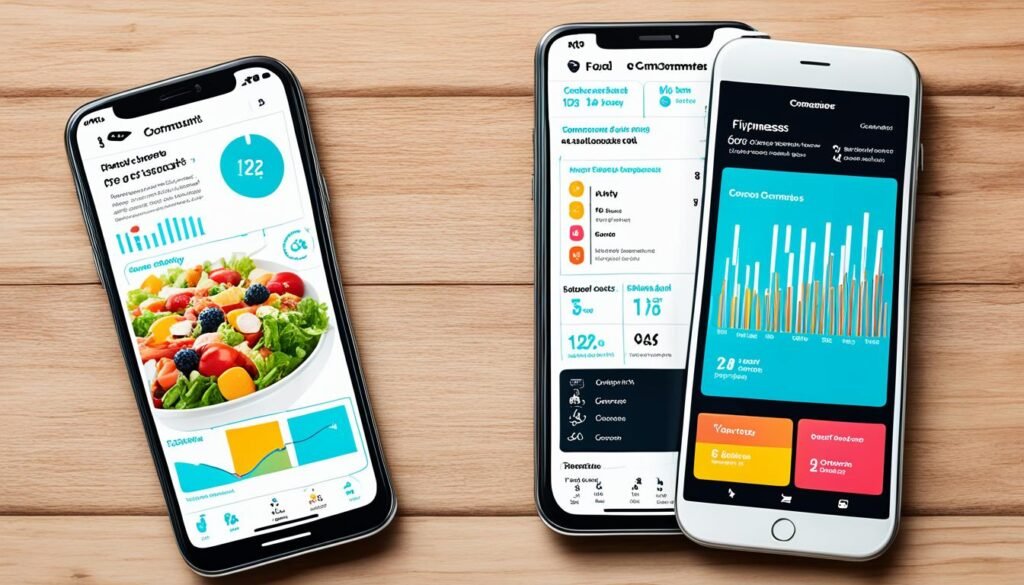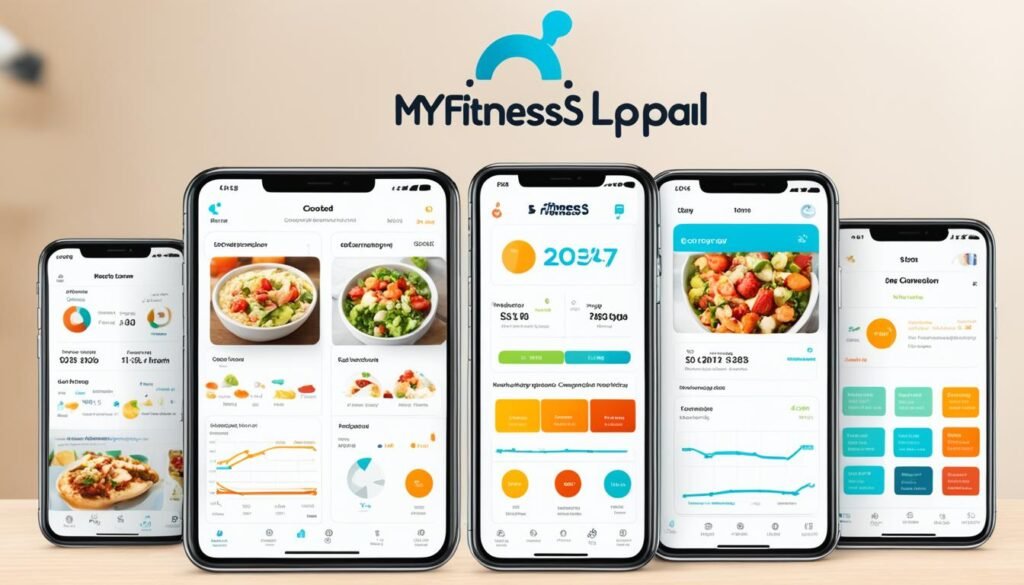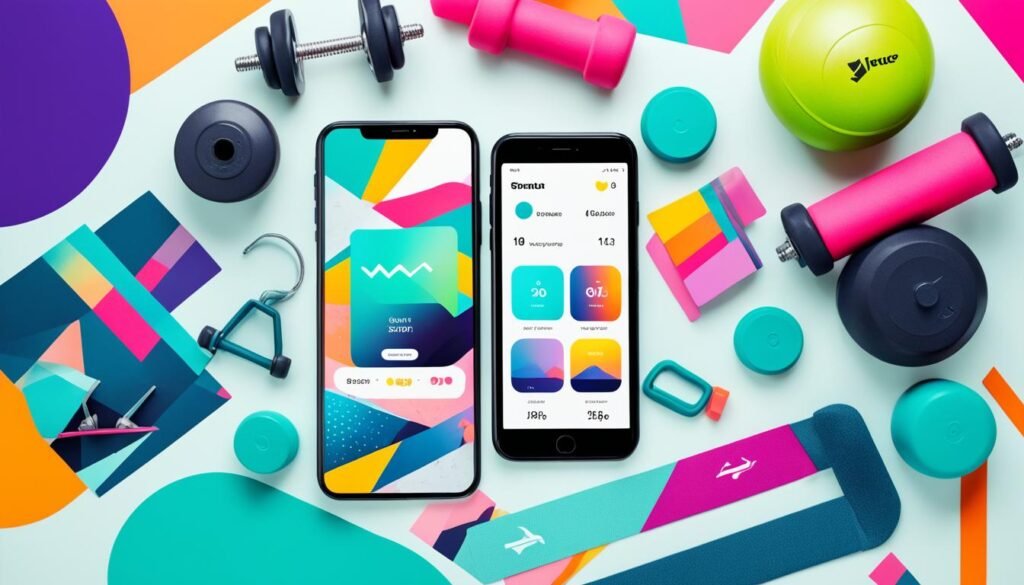We independently test and review fitness products using a research-based approach. If you buy through our links, we may earn a small commission at no extra cost to you. Read our Disclosure
Cronometer vs MyFitnessPal: In the competitive world of food tracking apps, these two giants stand out. Both Cronometer and MyFitnessPal allow you to monitor your calories, macros, and micros, but they take different approaches to accuracy, design, and usability. This article delves into what each of these nutrition trackers has to offer, helping you decide which app aligns best with your health goals

Introduction
Keeping track of what you eat and the nutrients you get is key. It helps you manage your health and reach your dietary aims. This is whether you aim to shed weight, gain muscle, or eat healthy. Apps like Cronometer and MyFitnessPal simplify the process. They give you a single place to record your meals, check your nutrient intake, and view your progress. Tracking nutrition accurately lets you spot nutrient gaps, tweak your meal plans, and wisely pick your foods.
Benefits of Accurate Nutrition Tracking
Food tracking apps offer deep insights into what you eat and the nutrients you get. They help you:
- Spot nutrient gaps in your diet
- Plan your meals better to meet your health goals and diet management
- Choose foods smarter for better nutrition tracking and overall food tracking
- Follow how you are doing on your health goals and diet management
Such apps can greatly help on your healthy living and fitness path. They make nutrition tracking easy and more meaningful.

Ease of Use: Adding Foods and Recipes
When we look at using them every day, Cronometer and MyFitnessPal are great for adding what you eat. Adding food in Cronometer is quick. You just use one button to include it in your daily log. MyFitnessPal works by meals, needing an extra step. Both make finding and choosing food simple, but Cronometer’s way might save you a bit of time.
Cronometer’s Streamlined Interface
The Cronometer app has an easy design for keeping track of what you eat. A quick “Add Food” button is always handy, letting you add new foods right away. Plus, it’s got a huge food list and even scans barcodes to make it all even faster.
MyFitnessPal’s Meal-Based Approach
MyFitnessPal separates your food by meals like breakfast, lunch, and dinner. This can help some people keep things organized but can slow down adding items. Still, MyFitnessPal’s “Remember Meal” makes adding your usual meals easy with a few clicks.
Both apps are good at making adding foods and recipes simple on your phone. They work well for anyone trying to track what they eat or plan meals better.

Food Variety vs. Accuracy
Food tracking apps often differ in the size of their food lists and how accurate they are. Cronometer and MyFitnessPal, two top apps, make this clear.
Cronometer’s Curated Food Database
Cronometer focuses on quality, using trusted sources like the USDA for its food info. Although it doesn’t have as many specific brands, you can count on the data being right.
To make sure data is correct, users have to upload photos of food labels. This steps helps keep the information in Cronometer accurate and reliable.
On the other hand, MyFitnessPal lets users add foods, leading to a massive list of 18 million items. Still, this means the nutrition facts might not always be spot-on. For those valuing accuracy, Cronometer’s approach wins out.
| Feature | Cronometer | MyFitnessPal |
|---|---|---|
| Food Database Size | Curated, focused on accuracy | Extensive (over 18 million foods), user-generated |
| Nutrient Accuracy | High, sourced from reputable databases | Potential for inaccuracies due to user-generated content |
| New Food Addition | Requires photo verification of nutrition labels | Users can add new foods easily |
Though MyFitnessPal boasts a bigger selection, Cronometer’s focus on nutrient accuracy wins over many. Its carefully chosen food database is ideal for those wanting precise nutrition details.
Nutrient Data and Analysis
Cronometer shines as the top choice for keeping track of nutrients over MyFitnessPal. It breaks down more than just carbs, protein, and fats. It also looks at important micronutrients, like vitamins, minerals, and amino acids.
For people on special diets like the keto diet, Cronometer is key. It ensures you’re getting all the nutrients you need. This makes it perfect for tracking both major and minor nutrients every day.
Cronometer’s Comprehensive Nutrient Breakdown
Cronometer is amazing for showing your nutrient intake in detail. It checks 84 different micronutrients. For those wanting to really watch their health, this is a big plus.
MyFitnessPal’s Limited Nutrient Reporting
MyFitnessPal, on the other hand, only offers a basic nutrient view. It mainly focuses on carbs, protein, and fats. This might work for some but could be limiting for those with specific dietary or tracking goals, like the keto diet.
Cronometer vs MyFitnessPal
When looking at app comparison, nutrition tracking, and fitness goals, Cronometer and MyFitnessPal both shine. These apps have different strengths, promoting unique experiences for users. Knowing the main differences can help you pick what fits your fitness goals best.
Cronometer shines with its detailed approach to tracking nutrients. It uses a food database that’s trustworthy, like the USDA. This makes sure the nutrition info you see is accurate. It’s great if you want to pay close attention to getting the right vitamins and minerals, or if you want to learn more about what you eat.
Then there’s MyFitnessPal, known for its huge food database. This means you have more food choices to pick from when tracking. It’s great for anyone who loves finding new foods or tracking in a social way. MyFitnessPal lets you connect with others and share your progress, which can be a big plus for motivation.
| Feature | Cronometer | MyFitnessPal |
|---|---|---|
| Nutrient Tracking | Comprehensive nutrient breakdown, including micronutrients | Limited nutrient reporting, focusing primarily on macronutrients |
| Food Database | Curated, verified database with lab-analyzed entries | Larger database with user-submitted entries |
| Social Features | Smaller, but active community on platforms like Reddit and Facebook | Extensive social networking capabilities, including sharing and community support |
| Pricing | Free version with option to upgrade to Cronometer Gold ($8.99/month) | Free version with option to upgrade to premium subscription |
Choosing between Cronometer and MyFitnessPal boils down to what you need for your fitness goals and personal preference. If you care a lot about tracking nutrients with accuracy and want a clean, easy-to-use app, Cronometer is a good pick. But, if you’re all about exploring a wide range of foods or prefer an app that lets you connect with friends, MyFitnessPal might be more your style.
Recipe Management
For anyone wanting to organize and follow their meals, proper recipe management is key. Cronometer and MyFitnessPal each have unique ways to help users with recipes. They both aim to make planning meals easier.
Cronometer’s Custom Recipe Editor
Cronometer lets users enter ingredients to see a detailed view of nutrition for the whole recipe. This is perfect for home cooks who want to keep an eye on their meals. Cronometer has a large database so you can accurately track what you eat.
MyFitnessPal’s Recipe Importer
On the other hand, MyFitnessPal focuses on making things simpler with the “Remember Meal” option. This makes it quick to add meals you eat often, saving you time. MyFitnessPal also has a tool to bring in recipes from the web, making it easier to add your favorite dishes.
Cronometer and MyFitnessPal are both good for recipe tracking and meal planning. The right choice depends on your needs and how detailed you want to get with your recipes.
Mobile Apps and Compatibility
Tracking what you eat on the go is important. Apps like Cronometer and MyFitnessPal have mobile versions for both iOS and Android. This means they work well on many devices.
MyFitnessPal is particularly loved for its app’s quality and how well it works with fitness gadgets. It’s easy to use and connects smoothly with various health tools. This makes it a favorite among users.
Compared to MyFitnessPal, Cronometer has been facing some app troubles. People have pointed out bugs and hard-to-use parts. Yet, many praise its detailed nutrient tracking on the computer version.
Even with its app issues, Cronometer is still a good choice. It’s known for its deep look into what you eat and how it tracks your health.
Both apps let you link to fitness gadgets and health tech. This connection helps in tracking all of your health data in one place. MyFitnessPal offers more options for linking, which is great for people with various tech gadgets.
| Feature | Cronometer | MyFitnessPal |
|---|---|---|
| Mobile App Ratings (iOS/Android) | 4.7/4.5 | 4.6/4.1 |
| Device Compatibility | iOS, Android | iOS, Android |
| Fitness Tracker Integrations | Garmin, Apple Health, Google Fit | Garmin, Apple Health, Google Fit, Fitbit |
In the end, both Cronometer and MyFitnessPal help with keeping an eye on what you eat. While MyFitnessPal might be better for most people due to its smooth experience and broader device support, Cronometer shines for detailed nutrient insights and personal tracking.
Social Features and Community
MyFitnessPal is great for those who like being social while tracking fitness and nutrition. It offers many ways to connect with others. You can add friends, join groups, and share your progress. This helps you stay motivated and feel part of a community on your health journey.
MyFitnessPal’s Social Networking Capabilities
MyFitnessPal is designed to boost your social experience. You get to talk to friends, family, or new people with similar goals. This sharing of encouragement and recipe tips is awesome for staying on track. You can also find groups for specific diets or workouts. It makes using the app fun and helpful.
Cronometer, however, is not as strong on the social side. You can add friends by email but it doesn’t do as much for connecting people as MyFitnessPal. If socializing is key for you, you might like MyFitnessPal better. It offers more community and ways to meet others who are also working on their health.
Your pick between Cronometer and MyFitnessPal depends on what you value in a health app. They both are good for tracking nutrition and fitness. Yet, if you want plenty of social features, MyFitnessPal has a lot going for it. It has richer community and social tools.
Cronometer Gold: Advanced Features
Want to take your nutrient tracking up a notch? “Cronometer Gold” has you covered. It lets you create your own nutrient goals and monitor how you’re doing. This adds a personal touch to your nutrition plan.
Especially useful for those on a keto diet, “Cronometer Gold” includes a special Keto Calculator. This tool figures out the best mix of nutrients for you to aim for. It also tracks important numbers like net carbs and fiber. This makes it great for anyone with unique dietary needs or big nutritional targets.
Nutrient Targets and Tracking
Setting up personalized nutrient targets is easy with Cronometer Gold. It lets you track your diet in a way that suits you best. This is perfect for people with specific dietary aims or those on special diets like keto.
Keto Calculator and Macro Ratios
Are you into keto? Then, the Keto Calculator in Cronometer Gold is your new best friend. It helps you figure out the right amount of carbs, fats, and proteins to maintain ketosis. This state is where your body uses fat for energy.
And there’s more. The app also lets you watch your net carbs, fiber, and sugar alcohol intake. These are key for sticking to a successful keto diet.
Pricing and Subscriptions
Both Cronometer and MyFitnessPal have free and premium versions. The free ones let you track food, nutrients, and see basic reports. But, for more advanced features, you need to go premium.
Cronometer Gold costs $9.99 monthly or $59.99 yearly. It gives you custom nutrient goals, a Keto Calculator, and a Nutrient Oracle for better nutrition tracking.
MyFitnessPal Premium is more expensive, at $19.99 a month or $79.99 a year. You get in-depth nutrient info, food insights, and a barcode scanner to level up your tracking.
Choosing between free and paid subscriptions is about what you need and your budget. If you want more than basic tracking, the premium choices are great. But, the free ones work well enough for simple tracking.
| App | Free Version | Premium Subscription | Premium Subscription Cost |
|---|---|---|---|
| Cronometer | Provides core features like food logging and nutrient tracking | Cronometer Gold | $9.99 per month or $59.99 per year |
| MyFitnessPal | Offers basic food logging and tracking capabilities | MyFitnessPal Premium | $19.99 per month or $79.99 per year |
Think about what you really need and how much you can spend. This will help you pick the best subscription model and app pricing for you. Whether it’s through free or premium paid features.
Use Cases: Which App is Right for You?
Choosing between Cronometer and MyFitnessPal depends on what you need and like. Cronometer is great for people tracking nutrients closely, especially on specific diets like keto. It has a detailed nutrient analysis and a big, carefully picked food list. This helps you make sure you’re getting the right nutrients.
MyFitnessPal, on the other hand, suits those who want a huge food database, a community feel, and an easy-to-use app. Since 2005, it boasts over 11 million foods. That’s why many people find all the food they eat here, no matter their diet.
Both apps are good for health and fitness, but the right one for you depends on what you value more. Pick Cronometer if you want accurate nutrient details and are on specific diets. Choose MyFitnessPal if a rich food database and connecting with others matter more to you. Your choice will reflect what’s most important in your healthy lifestyle.
Conclusion
In the battle between Cronometer and MyFitnessPal, the winner varies based on what you need for keeping track of your nutrition. Cronometer is best for detailed nutrient tracking, especially with special diets like keto, and for those who really care about exact information. MyFitnessPal, though, shines with its easy-to-use phone app and the chance to connect with others interested in health, offering convenience and community.
Both apps can really help you get healthier and fitter. The choice depends on your personal goals. Make sure to look at what each app does well and not so well. Then, pick the app that fits your health and fitness goals the best.
Whether you care more about tracking what you eat, what the app can do, or talking with likeminded people, there is an app out there for you. Think about what you want to achieve health-wise. Then, choose the app that will give you the most tailored support to reach those goals.


